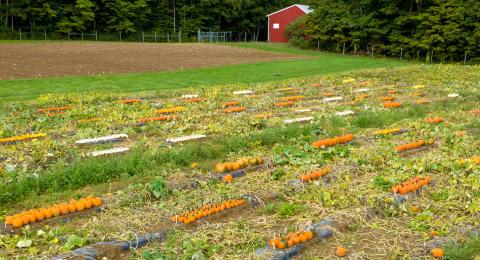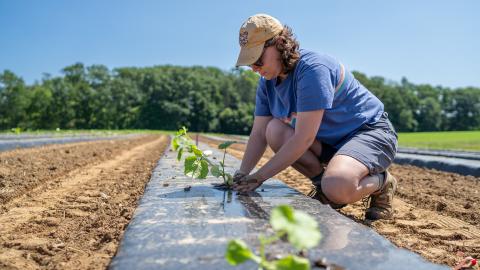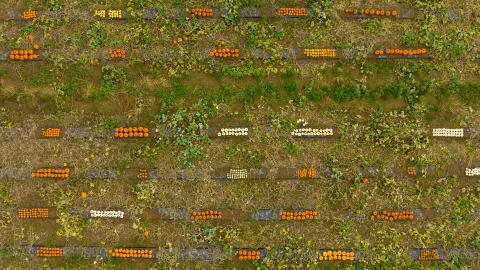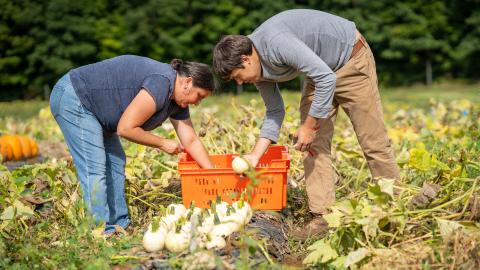RESeARCH GOAL

To understand the genetics of important stakeholder traits, such as marketable yield, disease resistance and nutritional quality, of cucurbit plants, including squash, pumpkins and melons.
About the Researcher
Chris Hernandez, Assistant Professor of Plant Breeding; principal investigator of UNH Cucurbit Breeding & Genetics program
Contact: Christopher.Hernandez@unh.edu
Plant breeder and NH Agricultural Experiment Station scientist Dr. Chris Hernandez leads the UNH cucurbits breeding and genetics program — considered the longest continuously running plant breeding program of its kind in North America. Hernandez is developing new cucurbits varieties with improved characteristics like increased market yield, disease resistance and nutritional quality. The research program includes collecting genetic data on key UNH breeding lines using DNA sequencing done at UNH’s Hubbard Center for Genome Studies, thus preserving a valuable seed and historical genetic information collection. With an eye on global agriculture, Hernandez plans to make these breeding lines available for license to farmers not only in New Hampshire but around the world.
UNH’s cucurbits breeding program has established an impressive portfolio with over 100 varieties of squash, pumpkins, gourds and melons developed, which contribute to local agriculture and have reached global seed catalogs. Founded in the 1940s, the program was pioneered by notable plant breeders like A.F. Yeager, Elwyn Meader, and most recently, J. Brent Loy. Breeding and research work for the UNH cucurbits breeding program is conducted at the Macfarlane Research Greenhouses, the Kingman Research Farm, and the Woodman Horticultural Research Farm.
“With the changing climate, we have insects that were historically not in the Northeast moving up into the Northeast. We also have other types of diseases coming in. So a big aim of the cucurbit breeding program is to develop varieties that have resistance and intolerance to those diseases.”
~ Chris Hernandez, assistant professor, COLSA







